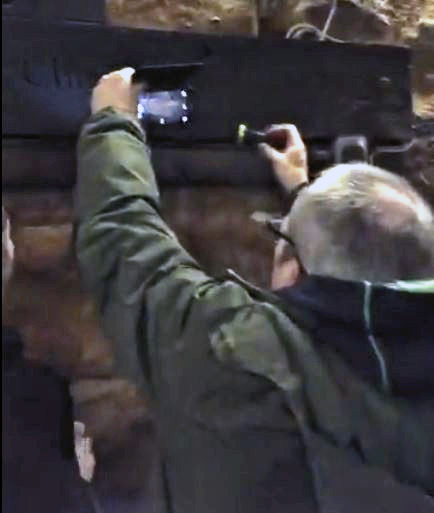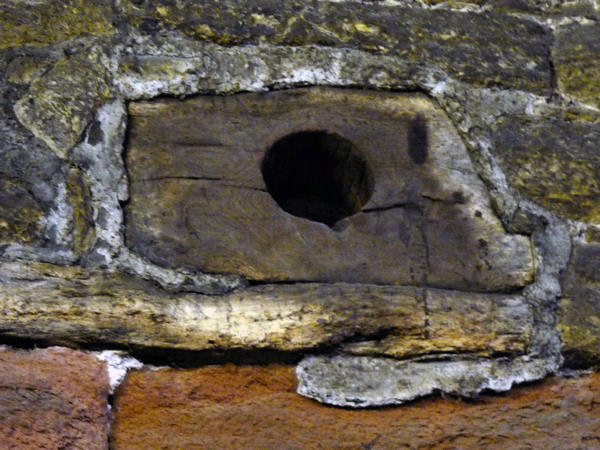
On Saturday we were treated to a Historic Graffiti workshop and survey day at All Saints Parish Church in Wigan. It was run by Carolanne King and Ellen McInnes, who have been giving these training days to various groups around the GM Borough. Our turnout was great with 22 in attendance (including 2 guys all the way from Stoke). Carolanne began with an introduction to the project, explaining what we were looking for, where to look and how to record our findings.
As mentioned in our October newsletter, this type of project was first established in 2010 in Norfolk, where the first large-scale survey of in the UK was produced. It was such a success that it was decided to go national and, here in the North West, the NW Historic Graffiti Project was initiated by CBA NW. The aim is to study any building of interest, from the Medieval up to and including the 17th century. There are a variety of reasons why marks are made on buildings, the most common being the masons. However, a less appreciated group of markings are apotropaic or protective marks apparently made to ward of evil spirits. They are usually found on doorways and windows; in fact anywhere where an evil spirit might find their way in. Typical designs are butterfly crosses, compass drawn crosses or double Vs. More elaborate shapes are less common and include pentangles and Cross of David.
With great enthusiasm, we started our survey after a short tea break, when we split into small groups to explore the various areas of the church. All Saints is mainly a Victorian rebuild but there are a surprising number of areas that have survived from the Medieval period. The largest is the tower which, over the years, has seen a few phases of construction. Only the top section and outer surfacing are later than the 1700s. Also, on each side of the nave, are 2 turrets which have spiral staircases giving access to the roof (although not included in our survey having been subject to a recent renovation). The Walmsley Chapel is another area to escape the 19th century rebuilt, providing more potential for us. Armed with clip boards, cameras and torches, we went in search of our targets. To be honest marks were few and far between but in the end we were able to record some, mainly mason's marks from the tower. Carolanne was excited, however, to discovered her first scorch mark of the whole NW survey. Scorch marks like these are confirmed to have been made deliberately (impossible to produce by accident) and are now accepted as protective marks. It was located on a reused block wood inserted high up in the south wall of the bell ringer's room. What it is doing in this position is unclear (could it be related to the large hole in the wood?).

Although the results of our survey were limited, the day was a great success as we now have the skills to go ahead and survey other buildings dating from before 1700.
200th Edition
Quite a milestone - it's now 20 years since we produced our first monthly newsletter. Over that period our Society has seen many ups and downs (thankfully not that many downs) - however for a number of years now we have enjoyed a healthy membership (long may it continue).
Programme for 2017
As usual a work in progress at this stage but already we have Steve Baldwin in April telling us about his Kingmaker 1485 Project. In May, Mark Fletcher from Matrix Archaeology will be giving us a talk on Manchester's Mythical Castle. In June, Karl Taylor from Oxford Archaeology North, will be giving us a talk on recent geophysics projects on various Roman sites the NW. Meanwhile, next month, our own Patrick Maloney has agreed to talk on one of his pet subjects i.e. Medieval Hammered Coins.
Next Meeting
Wednesday 1st February. - in the Standish Suite at the Brocket Arms (7.30pm as usual). It's our AGM this month but as usual, after the formalities, there will be a presentation. This year we will be reviewing our current knowledge of the Roman roads in the Wigan area. It's a good few years since we did anything on this subject but recent enquiries and visits to sites such as at Bryn and Brimlow Farm have renewed our interest. Hope to see you then - BA
|



